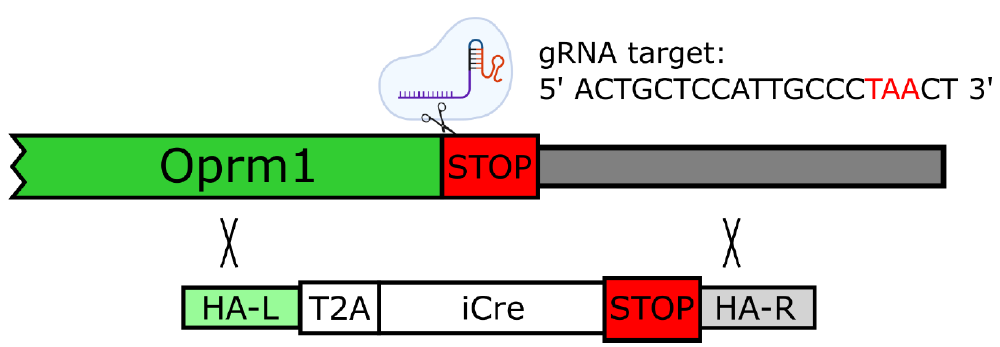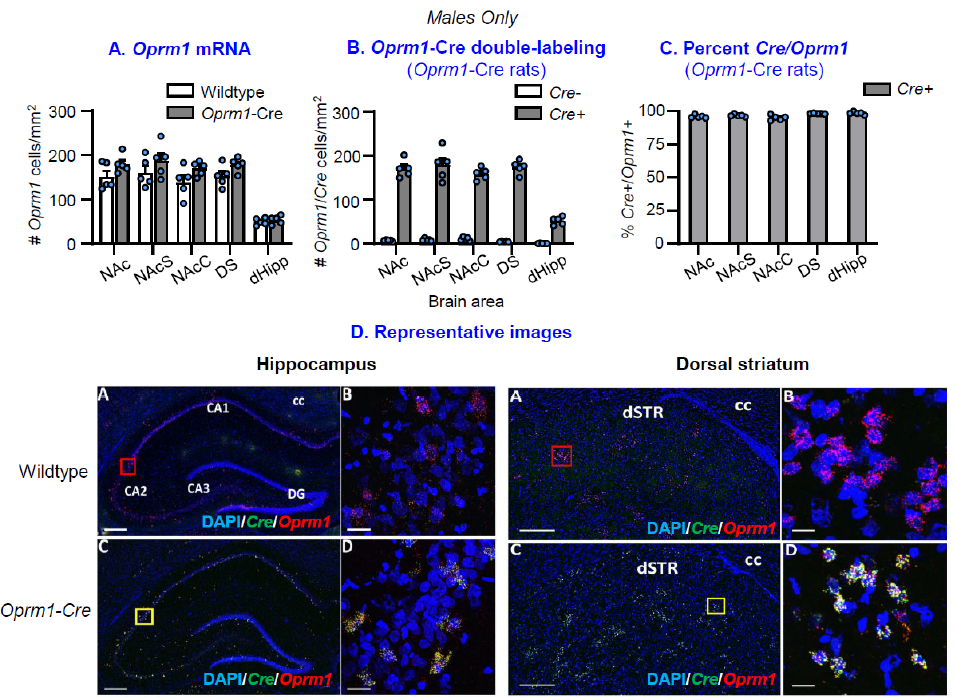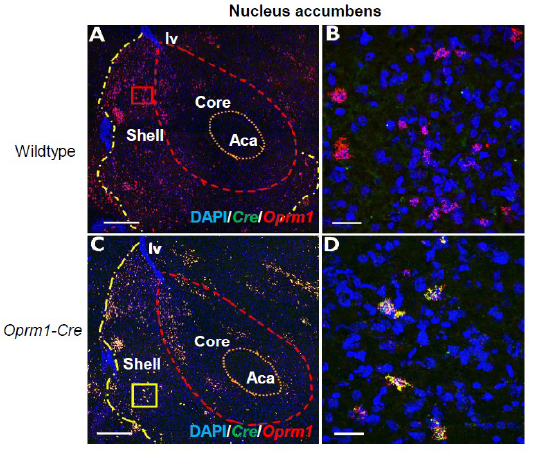Background | Status & Availability | Transgene Info | Phenotypic Characterization | Breeding | Genotyping | References | Blog/Comments/Reviews | Related rats | Acknowledgements
Background
The µ-opioid receptor (MOR), also known as OPRM1, is highly expressed in several brain regions and the most targeted opioid receptor for pain management. MOR has several downstream targets including GABA, which is the primary inhibitory neurotransmitter in the mammalian brain. To facilitate the genetic manipulation of MOR expressing cells, we have generated and characterized a transgenic Sprague Dawley rat expressing iCre recombinase under the OPRM1 promoter (OPRM1::iCre, line 1). The tissue-specific expression of iCre can be used to specifically express Cre-dependent in OPRM1(+) neurons.
Status and Availability
This strain is anticipated to be made available Spring 2023 as line 975 at the RRRC. ![]()
The rat is registered at the Rat Genome Database (RGD) as RGD ID#155641245 .
Transgene Information
Figure 1. CRISPR-mediated knock-in of T2A-iCre downstream of the rat Oprm1 coding sequence. Schematic of the target gene (rat Oprm1) with annotation for the location and sequence of the SpCas9 sgRNA that cleaves within the stop codon. The donor template encoding homologous arms and the T2A-iCre transgene are also shown.
Phenotypic Characterization
Figure 2. iCre mRNA and Oprm1 mRNA in nucleus accumbens, dorsal striatum, and dorsal hippocampus. (A) Oprm1+ cells per mm2 for Oprm1 mRNA (wildtype and Oprm1-Cre, n=5/genotype). (B) Oprm1+/Cre+ double labeled cells per mm2 (Oprm1-Cre rats only). (C) Percent Cre+/Oprm1+ (Oprm1-Cre rats only). (D) Representative confocal photomicrographs of Oprm1-Cre rat brains showing colocalization (yellow) between Oprm1+ neurons (red) and Cre+ neurons (green) in dHipp, DS, and NAc in comparison to wildtype rats which only showed Oprm1 expression (red). Objective lens magnification: D: A,C 10X and D: B,D 40X. Scale bars: D: A,C = 300 µm; D: B,D = 25 µm. Abbreviations: anterior commissure, Aca; hippocampal subfields, CA1, CA2, CA3; corpus callosum, cc; dentate gyrus, DG; dorsal striatum, dSTR; left ventricle, lv. For more information see, PMID: 36717230.
Additional phenotypic characterization is recommended for brain region and experimental paradigm of interest.
Breeding Strategy
Breeding Information, click here for PDF
Genotyping Assays
Click here for PDF
References that cite this rat
Blog/Comments/Reviews
Last Updated on November 12, 2024
No comments or reviews are available at this time.
Other related rats
Acknowledgements
Yavin Shaham, Brandon Harvey, Jennifer Bossert, Chris Richie, Francois Vautier



